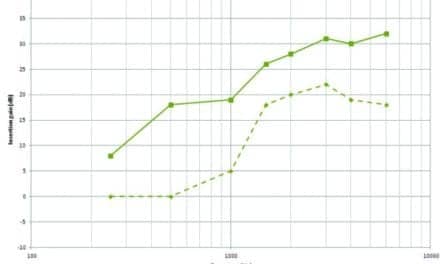March 28, 2007
A new understanding of hearing mechanics may help improve hearing aid design and enable more faithful sound reproduction for hearing instruments.
Research by Dr. Itay Rousso of the Weizmann Institute’s Structural Biology Department, which recently appeared in the Proceedings of the National Academy of Sciences (PNAS), suggests that a thin structure in the inner ear called the tectorial membrane responds to different frequencies. This membrane communicates between the outer hair cells which amplify sound in the form of mechanical vibrations and the inner hair cells which convert these mechanical vibrations to electrical signals and pass them on to the brain via the auditory nerve. If certain genes for this membrane are missing or damaged, total deafness ensues.
Rousso and a research team probed surfaces with a fine microscopic needle, they tested the resistance of the gel-like membrane at various points to assess precisely how rigid or flexible it was. The scientists found that the level of rigidity varies significantly along the length of the membrane: One end of the membrane can be up to ten times more rigid than the other.
These differences occur in the part of the membrane that is in direct contact with the outer hair cells. Observation under a scanning electron microscope revealed that this variation is due to changes in the way the protein fibers are arranged: At one end, they form a flimsy, net-like structure that allows the membrane to be flexible; on the rigid side the fibers are densely and uniformly packed.
The more rigid a tectorial membrane is, the higher the frequency at which it can vibrate. Thus, the flexible end of the membrane, which should respond to low-frequency vibration, is found near the hair cells that transmit low frequencies, and the rigid end near hair cells that transmit high ones. This spatial separation, say the scientists, translates into the ability to distinguish between sounds of different frequencies.
Source: American Committee for the Weizmann Institute of Science.




